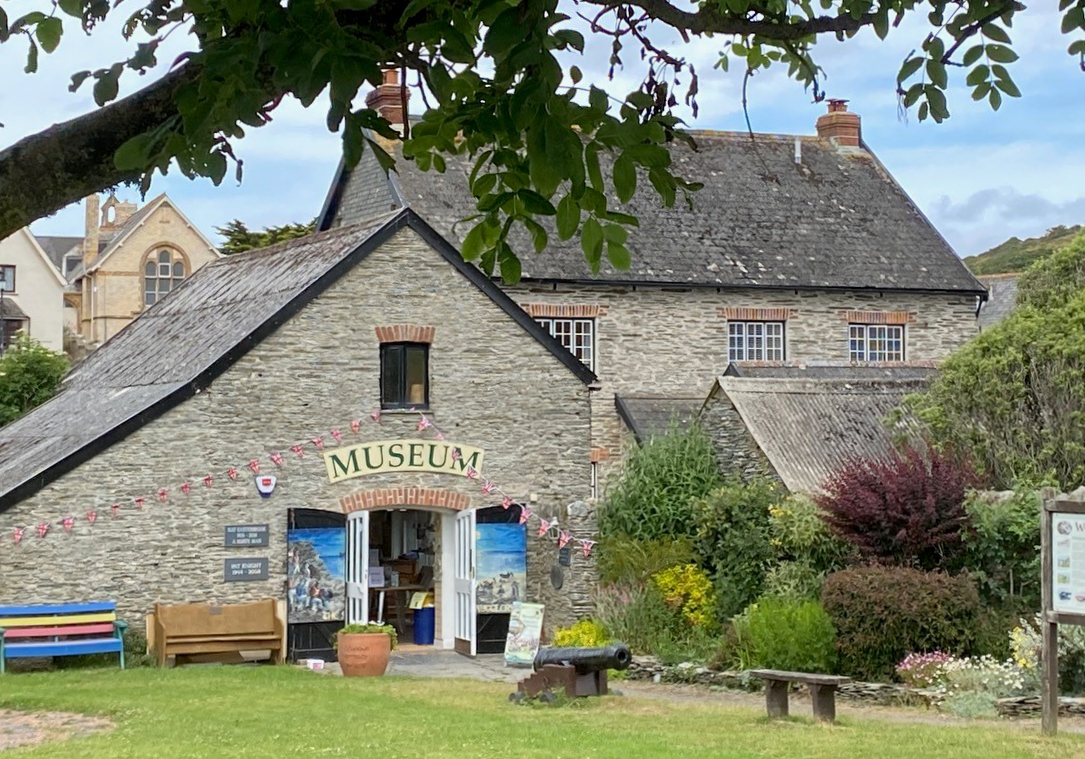Its history...
Famed far and wide for its shells, Barricane was the first of Woolacombe’s beaches to attract visitors. From the mid-1800s onwards, when Woolacombe was still in its infancy and very much part of Mortehoe, parties of excursionists would arrive to see the wonders of the little cove. Roads in the parish were rough and unmade.
People would travel along what is now called Mortehoe Station Road to the centre of Mortehoe, possibly in a charabanc – a long open carriage car with space for 20 or so passengers – to alight and take refreshment at the old Barracane Inn, so-named (and as spelt then) as it was the nearest that a motorised form of travel could get to the Shell Beach; people would then walk down the steep hill to the level ground at the bottom, to walk along what is today’s Esplanade and clifftop above the cove – which is approximately half-way along the front. Barricane has the great advantage of having a sloping path down to the shore, making it easy to access. There were no steps down to neighbouring Combesgate Beach then, and Woolacombe Sands at this point were something of a windswept wasteland, littered with wreckage from shipwrecks.




Sometimes visitors would be taken down the hill (and back up afterwards!) by Eliza Yeo, in her donkey-drawn trap: Eliza was an enterprising woman who lived at ‘Sea View Cottage’ in North Morte Road, and one of the very first to realise that Mortehoe and Woolacombe had much to offer visitors and that she could benefit from it!
People flocked to Barricane and it wasn’t long until more enterprising locals started to offer refreshments: there were three rival tea-tent owners who vied for customers – there are many old photos showing the circular bell-tents, plus many trestle tables and benches set out across the beach. The tables were laid with linen tablecloths and adorned with vases of flowers. Local children would offer dishes of shells for sale.
From the 1870s, when the railway and its station had arrived in Mortehoe (albeit a very long walk from the village!) the numbers of visitors increased dramatically with many trains stopping each day. Local people with carriages and carts would meet the trains to convey the travellers to the seaside, and then make the return journey afterwards.
Barricane beach ... SHELLS
It’s possible to find at least 45 different varieties of seashell here. Some will be from sea creatures that live in local waters, but other, more exotic, are said to arrive in Morte Bay’s waters from the Caribbean with the help of the Gulf Stream and are ushered into Barricane by the rocks that lie diagonally at the beach’s mouth.
Basically, almost all of the shells are classed as either univalves or bivalves: univalves have only one shell, whereas bivalves have two. The univalves include limpets, top shells, whelks and winkles, and the bivalves include cockles, mussels, oysters, razor shells and scallops.
The number of shells to be found depends on various factors: the state of the tide, the time of year, the weather conditions . . . sometimes there will be clear patches or strandlines with many different varieties, and at other times almost none. It’s an unlucky visit though if there is nothing. Usually you can count on there being some common limpets, little flat tops, mussels and pieces of the long razor shells, at least. Many people just collect the tiny cowries which wash up in calm weather, on a ‘cowrie tide’.

To take just one species: over a period of over 30 years, I’ve found six types of limpets: the common limpet, whose creatures were eaten by poor Morte village-folk as one of their staple foods, keyhole limpets, blue-rayed limpets, slipper limpets, slit limpets and a rare bonnet limpet..
Visit the Mortehoe Museum they have a display of Barricane’s shells and can help with identification.
Barricane is also renowned for its’ café that serves ice-creams, hot and cold drinks, cakes, lunches and its’ authentic Sri Lankan curries in the early evening, which can be enjoyed sitting on the beach whilst watching the sunset. The café is craned on to the beach in April, and off again in September, to protect it from high tides and winter storms.
Barricane is a wondrous beach which says and means different things to different people. It’s in a magical location, with the glorious headland of Morte Point in view and the island of Lundy straight ahead. In summer on calm days it takes on a Mediterranean flavour with its azure waters, colourful sun umbrellas and families at play. And there will always be a few people searching for shells!
Enjoy!
Sue Hill, February 2023. For Woolacombe Tourist Information Centre
Read more about Woolacombe & Mortehoe
Mortehoe Museum
Discover the fascinating history of Mortehoe at the museum near Woolacombe, North Devon. Explore exhibits and learn about local heritage.
Barricane Beach
Famed far and wide for its shells, Barricane Beach in North Devon was the first of Woolacombe’s beaches to attract visitors.

